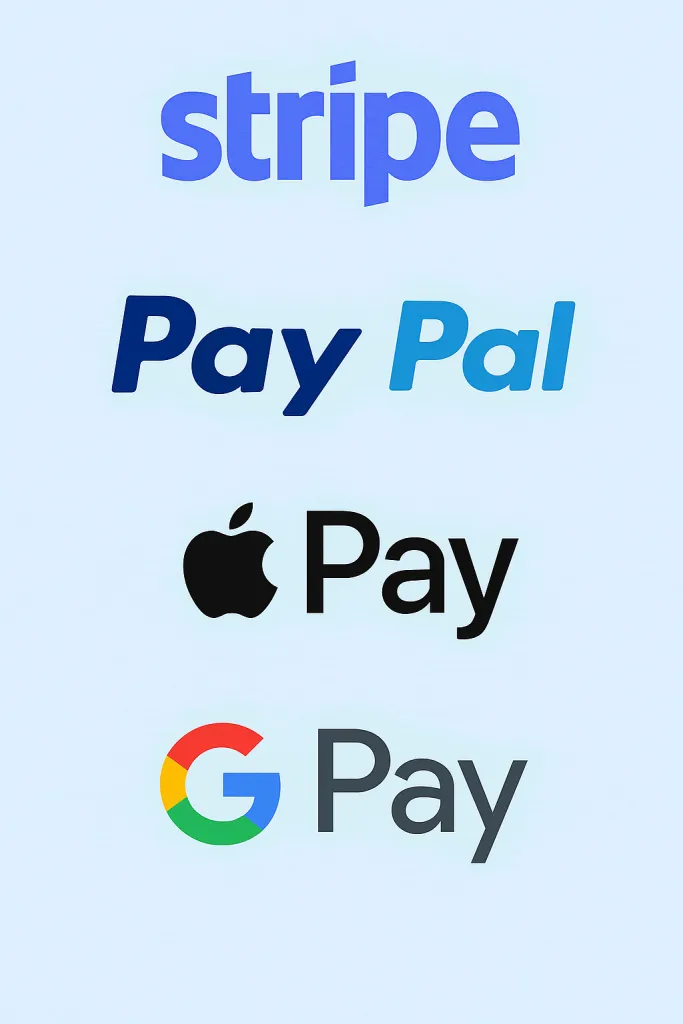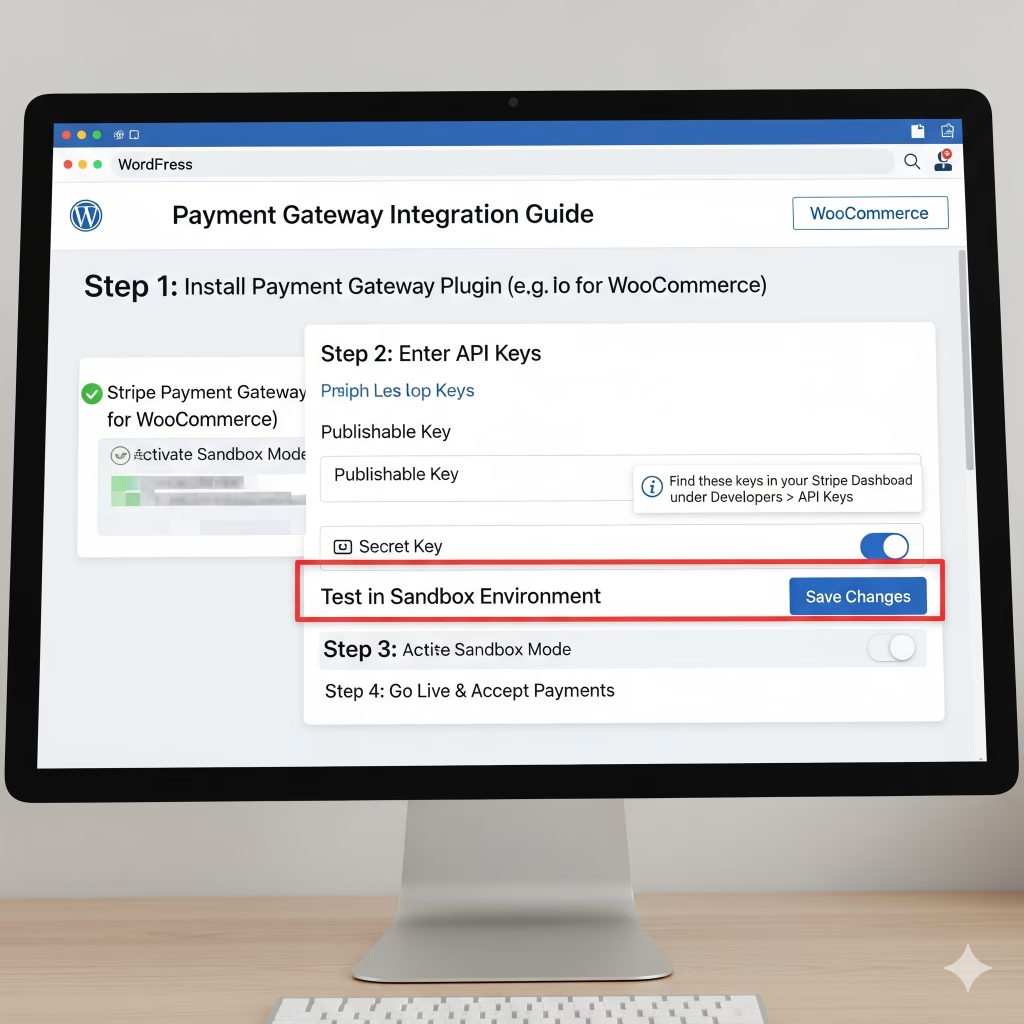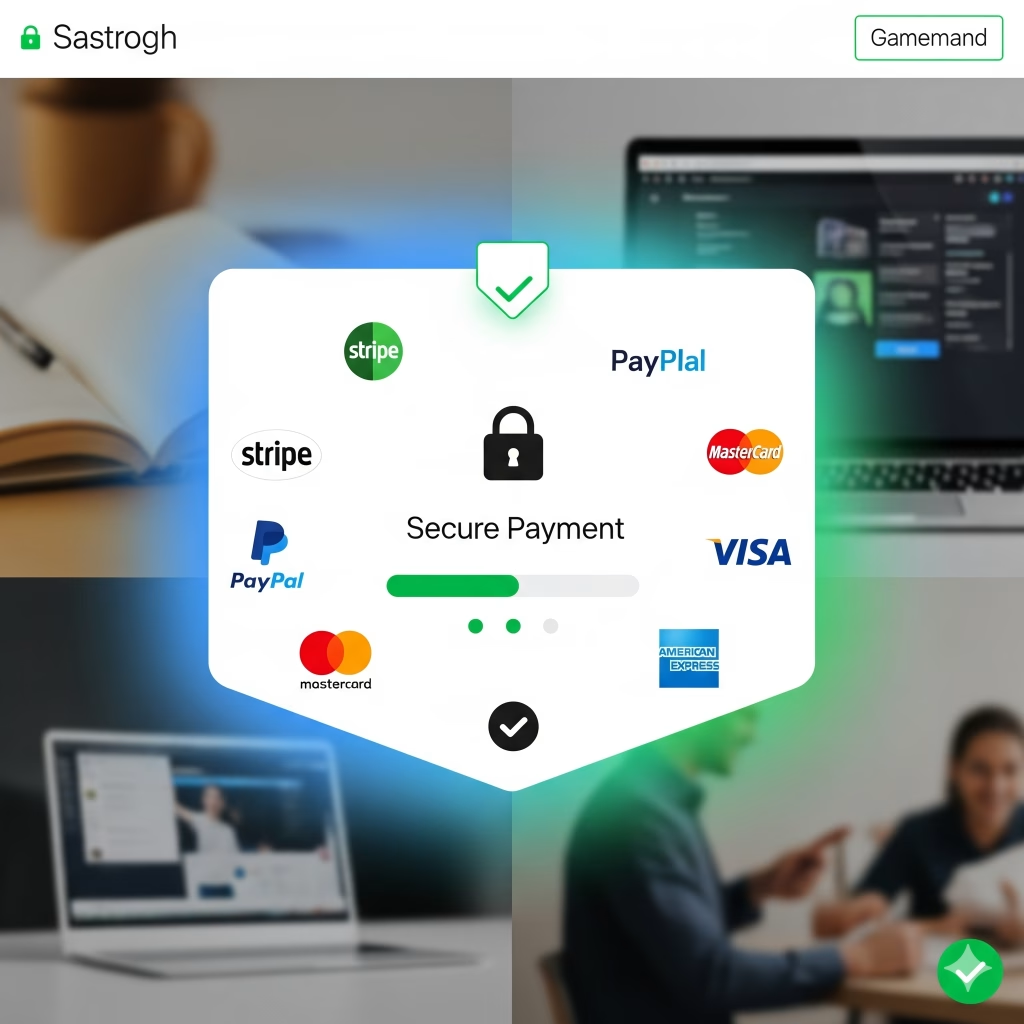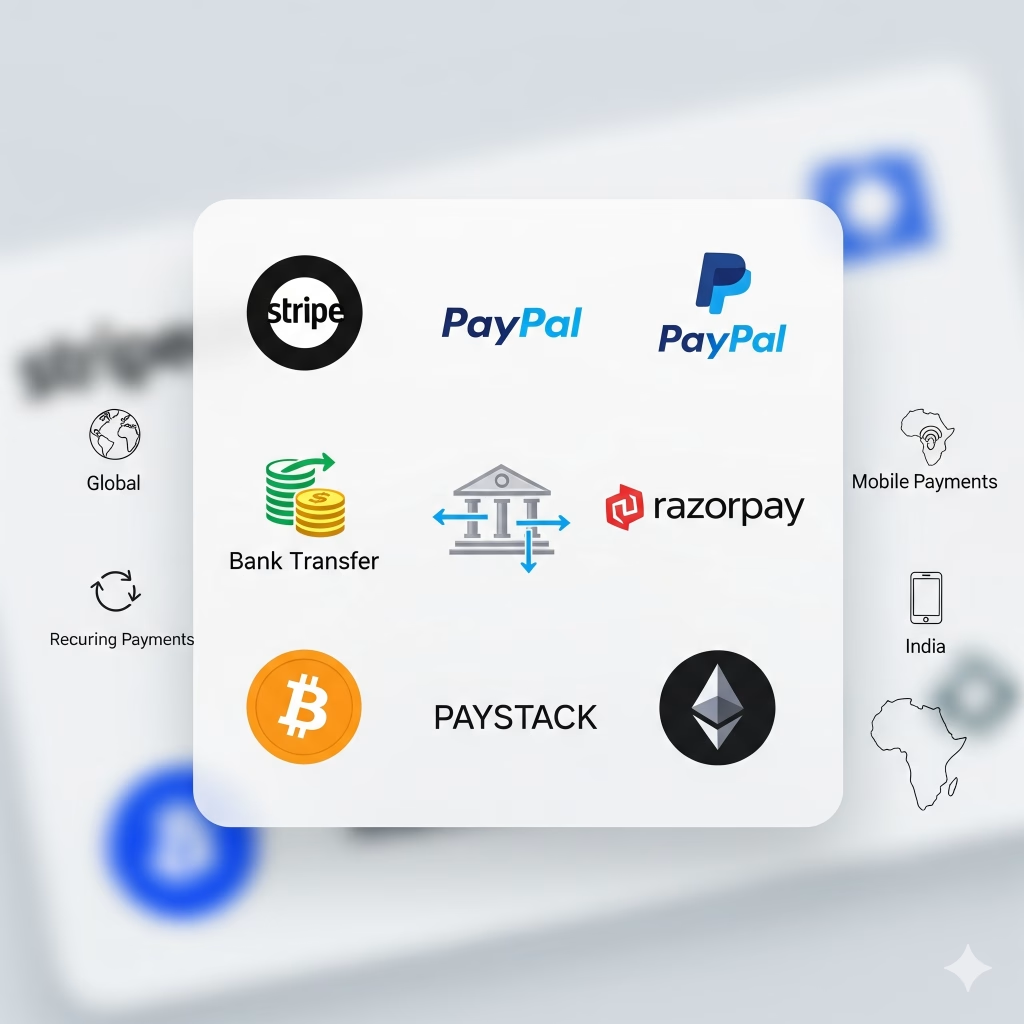We can help you integrate payment gateways on your website, allowing you to securely accept payments for physical products, services, subscriptions, or digital downloads. Whether you’re setting up an online store or adding a simple checkout for a service, a properly integrated payment system gives your customers confidence and makes transactions smooth and reliable. We work with trusted platforms like Stripe, PayPal, and others to ensure everything is safe, compliant, and easy to use.

🛠️ How Integration Works (WordPress + WooCommerce)
- Install the Gateway Plugin
- Example: WooCommerce Stripe Payment Gateway
- Enter Your API Keys
- Get these from your Stripe or PayPal account
- Test in Sandbox Mode
- Ensure checkout works before going live
- Go Live
- Accept real payments immediately
🔐 Security Considerations
- PCI-compliant out of the box (Stripe/PayPal handle sensitive data)
- SSL required (you already have Let’s Encrypt SSL on your server)
- Can add fraud protection, CAPTCHA, and webhook validation

🧾 Extras You Can Add
- 💸 Subscriptions / recurring billing
- 🧾 Invoices & PDF receipts
- 🎁 Discount codes
- 📲 Mobile pay (Apple Pay, Google Pay)
- 📤 Instant file delivery for digital goods
✅ Supported Payment Gateways
| Gateway | Type | Features |
|---|---|---|
| Stripe | Credit/debit cards | Global, recurring, Apple/Google Pay |
| PayPal | PayPal + cards | Easy setup, trusted by users |
| Bank Transfer | Manual | Local transfers, invoices |
| Razorpay / Paystack | Regional | Great for India / Africa |
| Crypto (optional) | Bitcoin, ETH | Via plugins like NOWPayments, BitPay |
MORE LINKS:
E-commerce store
Sell digital products
Manage inventory
Manage bookings
Cart recovery
Shopify vs Woocommerce
Tax & shipping zones
Discount coupons
Store ownership
WE DO PAYMENT GATEWAY INTEGRATION ON YOUR E-COMMERCE WEBSITE
Our team will guide you through the entire process, from selecting the right gateway for your business model to configuring payment settings and testing the flow end-to-end. We make sure that your payment forms are secure, mobile-friendly, and compatible with your site design. If you’re using WordPress, WooCommerce, or a custom-built site, we tailor the integration so it works perfectly with your existing setup and branding.

Beyond just setup, we can also help you automate key parts of your payment system. This includes setting up automated receipts, recurring billing for memberships, and connecting payments to your CRM or email marketing tools. By making your payment process seamless and secure, you create a better experience for your customers while streamlining your operations behind the scenes.
Integrating payment gateways is one of those tasks that sounds glamorous in sales copy but in practice is tedious and heavily regulated. The core idea is simple: you connect your site or application to a third party service that processes credit cards, digital wallets, or bank transfers on your behalf. The reason you do not handle payments directly is obvious. No one sane wants the liability of storing card numbers or complying with every last PCI requirement. The gateway exists precisely to offload that burden onto a specialized provider.

On a technical level the process depends on the platform. In WordPress or other CMS systems, integration usually means installing a plugin and configuring API keys. In custom applications it requires coding against the gateway’s SDK or REST API, handling callbacks, and validating responses. The complexity is rarely in the coding itself, which is mechanical, but in understanding the workflow of authentication, authorization, and settlement. One mistake in those flows and you have angry customers plus failed transactions.

The user experience layer adds another dimension. A proper integration does not just process money, it reassures the customer that the process is secure and reliable. Redirecting users to a clunky external page or serving them error codes erodes trust instantly. Front end design and back end logic collide here, because a visually smooth checkout means nothing if the underlying API call is prone to timeouts. Every integration lives or dies on the smallest details of stability and presentation.
Security is not optional but central. Even if the gateway handles sensitive data, you still have to secure the connection between your site and their servers. Misconfigured SSL, poor validation of responses, or logging sensitive tokens can expose weaknesses. Vendors advertise compliance, but your implementation can still turn into a liability if you treat it as a box ticking exercise instead of an ongoing responsibility. Payment integration is less about writing code and more about refusing shortcuts.
Cost models vary as much as the gateways themselves. Some take a percentage of each transaction, others add fixed fees, and some blend both. The integration step is only the beginning, because the economics of the gateway become part of your business structure. A cheap plugin hides the reality that every sale now carries an invisible tax. Choosing a gateway is therefore not just a technical decision but a financial commitment that shapes margins.
So yes, payment gateways can be integrated, but the phrase oversimplifies the work. It is never just “plug and play,” no matter how often marketing insists otherwise. You are creating a dependency on an external financial service that will handle your revenue flow. The code may take hours to write, but the consequences of poor choices last much longer. Integration is easy. Living with the integration is the actual test.


